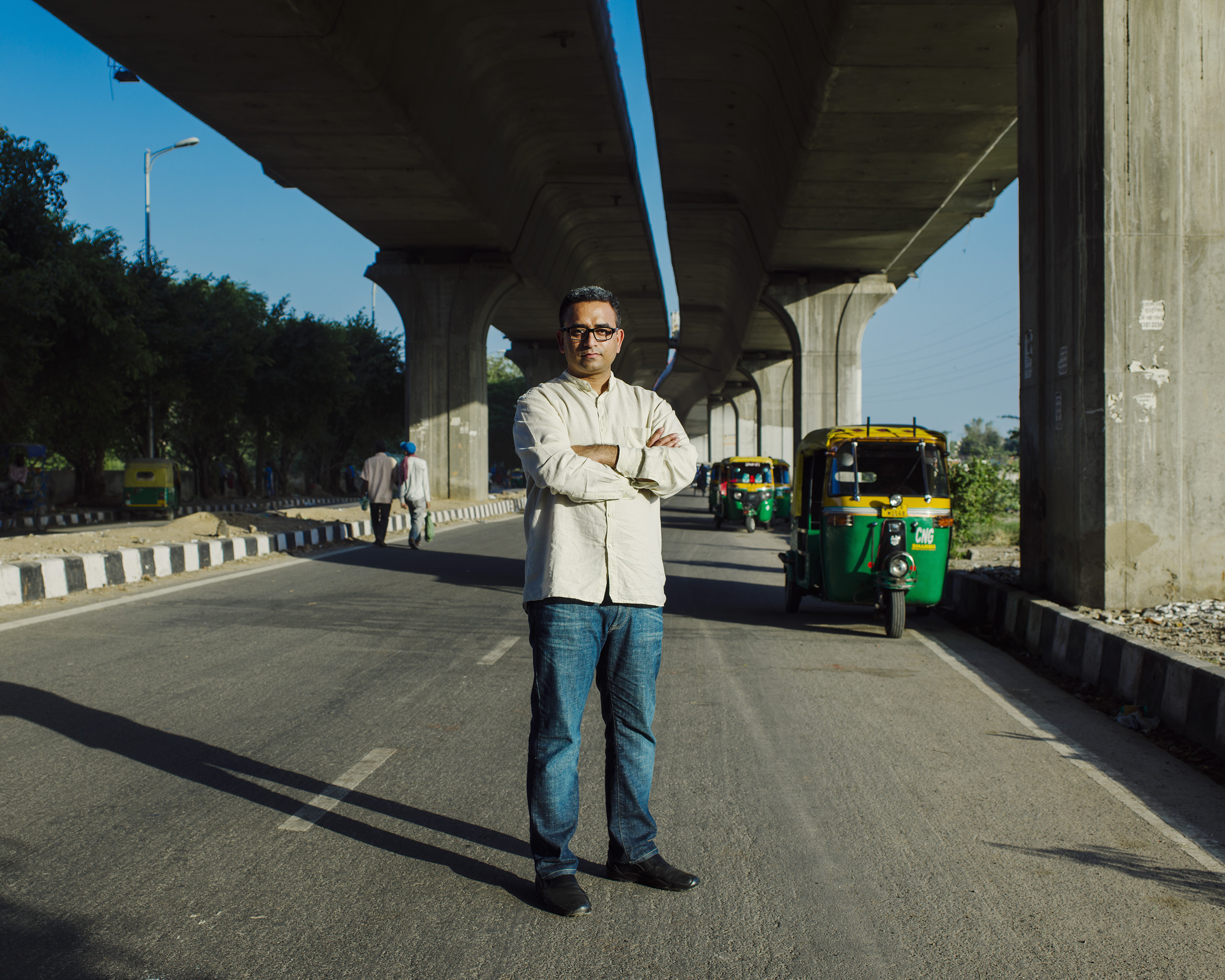Apart from his reflective vest, Piyush Tewari could easily slip back into his former life as a private-equity executive. Dressed in black shoes, navy trousers and a sky-blue shirt with the vest thrown over his shoulders, Tewari is holding up a newspaper in front of a group of female police trainees in New Delhi. The young women will soon be patrolling the Indian capital’s streets, and often they will be first on the scene of road accidents. And in the critical initial minutes following a crash, their actions could determine the difference between life and death for the injured. For example, as they move a victim off the ground, they’ll have to keep the neck and spine as stable as possible to guard against aggravating any such injuries.
“But your police vans don’t come equipped with neck collars [or neck braces],” says Tewari, carefully folding the broadsheet lengthwise so that it resembles a flattened tube. “So here’s what you do.” A trainee lies down on the floor. As she plays the victim, Tewari slips the folded newspaper under her neck and pulls up the two ends to transform it into a stiff sling—a temporary brace to hold her head in place as she is moved off the ground.
The tip is part of a training session at a police college held by the SaveLife Foundation, a nonprofit founded by the 35-year-old Tewari in early 2008, months after he lost a 17-year-old cousin to a road accident in the northern Indian city of Kanpur. At the time, Tewari oversaw the Indian operations of the Calibrated Group, a U.S. private-equity fund. “Hit by a vehicle, my cousin was bleeding on the road, but he had enough strength to drag himself to the side of the road and ask for help,” says Tewari. None came. His cousin eventually died.

The tragedy spurred Tewari to examine road-accident deaths in India. What he found was shocking: the country has the world’s most dangerous roads, with more people dying in traffic accidents than in China, which has more cars and a bigger population. According to the latest Indian government figures, 134,513 people died in road accidents in India in 2010; the comparable figure for China was less than half that at 65,225, while for the U.S., it was less than 40,000. Estimates from doctors cited by India’s Law Commission suggest that 50% of these deaths could have been averted had the victims received timely medical care. “Something had to be done,” says Tewari, “and it had to be done institutionally.”
Training is only one part of SaveLife’s mission. It is lobbying for road-safety legislation that would, among other objectives, impose stern penalties for faulty road design and engineering, and mandate the creation of a national road-safety agency. SaveLife also wants a Good Samaritan law to protect bystanders from potential run-ins with the police or medical staff when they intervene to help road-accident victims. Fears of questioning or harassment by officials often hold people back from extending a helping hand in an accident, says Tewari. “I would say about 500 people would have passed [my cousin]—but not a single person came to assist him.”
Tewari’s ultimate goal is to make SaveLife redundant. “He has identified a problem, he’s got a solution for it, and there is an end to the problem,” says Saji Cherian, the foundation’s operations director. “That’s the inspiration from Piyush. The problem goes away, we go away.”
- Donald Trump Is TIME's 2024 Person of the Year
- TIME’s Top 10 Photos of 2024
- Why Gen Z Is Drinking Less
- The Best Movies About Cooking
- Why Is Anxiety Worse at Night?
- A Head-to-Toe Guide to Treating Dry Skin
- Why Street Cats Are Taking Over Urban Neighborhoods
- Column: Jimmy Carter’s Global Legacy Was Moral Clarity